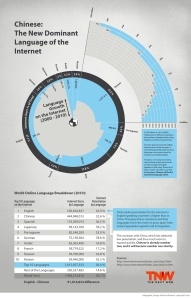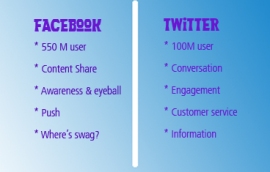Inspired by Future Midwest conference last weekend. 2 day. 13 sessions. ¥ ideas & sparkles generated within and beyond.
Before attending the event, I’ve always been reading Read Write Web‘s “Never Mind the Valley” column and wondering when and how Detroit is going to be the next city. In this past conference, still had no answer to my question, but I know Detroit will. Not a Michiganer from the beginning, but after watching a great clip http://vimeo.com/11021663 displaying the rise, fall, and rebirth of Detroit, I can’t help but to be proud of being in Midwest. Whatever people from the east or west coast might think, this cornfield is gonna have something big happening.
Aside from the inspiration, there are indeed some very hardcore strategic concepts from various great sessions:
– Moving from acquisition to retention is key to the business. (via @joejaffe “Flip the Funnel“)
– Everything is no longer the way it used to be (ain’t we surprised about that!) Public Relations (and any types of marketing, in my opinion) becomes a two-way mutual relationship. As much as marketers would like to create buzz, we are no longer in control of the relationship. Our customer / audience just gonna say what they want to say. (Takeaway – so grab your seat or oxygen mask & be prepared!) (via Beth Harte @BethHarte)
– Realize & plan for social analytic lifecycle: discover, analyze, segment, strategize & integrate, and execute. Utilizing data mining & analytic tools (Trensmap, MediaBank…etc) (via Ken Burbary @kenburbary)
** Ken’s fantastic presentation is now available at http://kenburbary.posterous.com/consumer-insights-and-analytics-that-drive-di
– Being a challenger brand (I suspect Scott was suggesting local startups & entrepreneurs to brand themselves as a challenger, agreed?) requires different approach, grounded brand idea, study outside of category & other challenger brands, and finally building identity via social media. (via Scott Huaman @scotthauman)
At the end of the conference, although physically exhausted from all the learnings & “networking” (Ok, I said that, I am actually trying hard to put myself out there to be sociable because I am that shy), I am emotionally invigorated by these two very specific speaker that I wish myself live up their spirit & philosophy from now on.
Sam Valenti, a Michiganer, an entrepreneur, and a lead-thinker. Just like all the other presenters, he shook up our minds during his “permeable Brands,” presentation, but it was his last slide that said, “the scariest thing, for me, is not dying. It’s the thought “oh shit, I wish I’ve done…” instead of “oh shit.” before I die”
I was so lucky talking to Sam soon after his presentation. Great guy – simply love him & his motto.
Blagica Bottigliero‘s story telling melted me, and I’m sure her presentation inspired just as many people at Future Midwest. A Michigan girl in big city like Chicago, Blagica touches every aspect of life, career, and relationship with her lovely heart & intelligent mind. I most certainly am going to check out her http://www.galsguidesummit.com/ from now on 🙂 (Note to self: start embracing life by traveling by myself!)
All in all, success. Kudos to the great team behind the scenes, kudos to all the people who make the event, kudos to all the tweeps who spice up the session, and kudos to myself – shy as always but surely found her survival way in social media jungle. Like my Twitter name says, @evyfindstheway, right?)
“I’ve seen the future, and it works!” It certainly works at Future Midwest!
(Sorry Ben for stealing your favorite quote from Michael Hanlon. Ooops!)



